The Wind Waker (GC, 2002)

First unveiled at Space World 2000 with a moody, realistic-looking battle between Link and Ganondorf (well, realistic for a 128-bit machine), the project was later hugely revised. A year later, cel-shaded Link was introduced to the world to a chorus ofchildish name-calling. Of course, the hatersshouldn't have got their collective panties in a twist. The final game would go onto to be a classic, introducing an incredible new water-covered world to explore and a timeless, enduring graphical style.
Four Swords Adventures (GC, 2004)
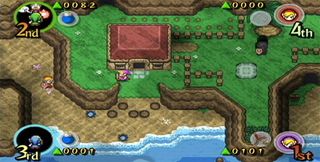
Ditching the hub world structure of traditional Zeldas, Four Swords was level-based, with a heavy multiplayer focus. Cute as a bag of kittens (eh… not the drowned variety) it’s a quirky addition to the series. Annoyingly, though, to play with friends, each player needed a Game Boy Advance and a link cable to connect up with their GameCube before they could get their multiplayer Linkage on. Ah, the infuriating, needlessly convoluted wonders of technology.
The Minish Cap (GBA, 2004)

We don’t know what the folk at Ninty were huffin’ back in 2004, but clearly whatever it was convinced them Link’s latest adventure should involve our hero being shrunk to tiny proportions by a sentient hat called Ezlo. A bizarre premise or not, this was yet another feather in the series’ extremely stylish cap.
Twilight Princess (GC/Wii, 2006)
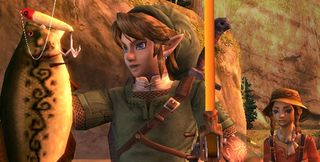
Unlike Sonic, Link can amazingly get away with turning into a wolf and not have the ensuing game go the shitZOR. Twilight Princess ably proved this with a thrilling adventure combining, epic bosses, culinary capable yetis and only slightly crowbarred motion controls. The complex wind tunnel(and its incredible dragon beastie) remains one of our highlights from the whole series. Interestingly, the game was first developed on Gamecube and then ported to Wii during its development. Both versions are actually reversed in terms of locations, too. And everything that appears on the east on the Wii’s version of the world exists in the west in the GameCube game.
Phantom Hourglass (DS, 2007)

Despite a slightly odd and frustrating central temple structure, Phantom Hourglass rocks like some half-assed analogy we can't quite think of. Inspired by Wind Waker’s enchanting art style, it successfully transferred the charm and sense of wonder of the Gamecube title onto the DS. With well-implemented stylus controls, it remains one of the best titles on Nintendo’s megaton handheld.
Spirit Tracks (DS, 2009)
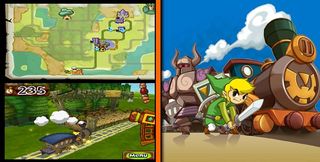
Sticking fairly closely to the format established in Phantom Hourglass, Link’s second DS outing was even more inventive than the 2007 title. With incredible bosses, a brilliantly responsive transport system revolving around trains and eh… slightly embarrassing ‘blowing into the DS’ microphone bits’; Spirits Tracks continues Nintendo’s near 100% batting average of awesome Zelda games.
The future
A quarter of a century in and our boy and his fetching pointy hat are still going strong. Here’s what lies ahead for the intrepid, pottery-smashing explorer…
Ocarina of Time 3D (3DS, 2011)
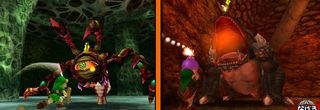
We love Ocarina like an alcoholic loves a little 8am eye-opening belt of whisky. Still, the game’s blocktastic visuals haven’t exactly aged well. That’s why we’re so relieved to have our beloved baby back with an updated engine, real purdy 3D effects, and mercifully, a redesigned Water Temple. We believe something along the lines of “W00t” is in order.
Skyward Sword (Wii, 2011)
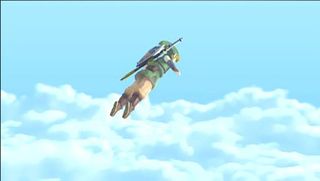
Looking like a cross between Wind Waker and Twilight Princess (with added giant, sodding scorpions), Skyward Sword will no doubt be amazing. Personally we can’t wait to get to grips with proper 1:1 motion control sword fighting. Lets just hope Tingle and Navi have been fitted with some cement shoes then pushed off a short pier. Dicks.
So there we have it, 25 glorious years of Zelda and nary a dud in sight. Just no one mention this…
Feb 21, 2011
So there we have it, 25 glorious years of Zelda and nary a dud in sight. Just no one mention this…
Feb 21, 2011

